Creativity unbound: The story of Derek Jarman's Prospect Cottage
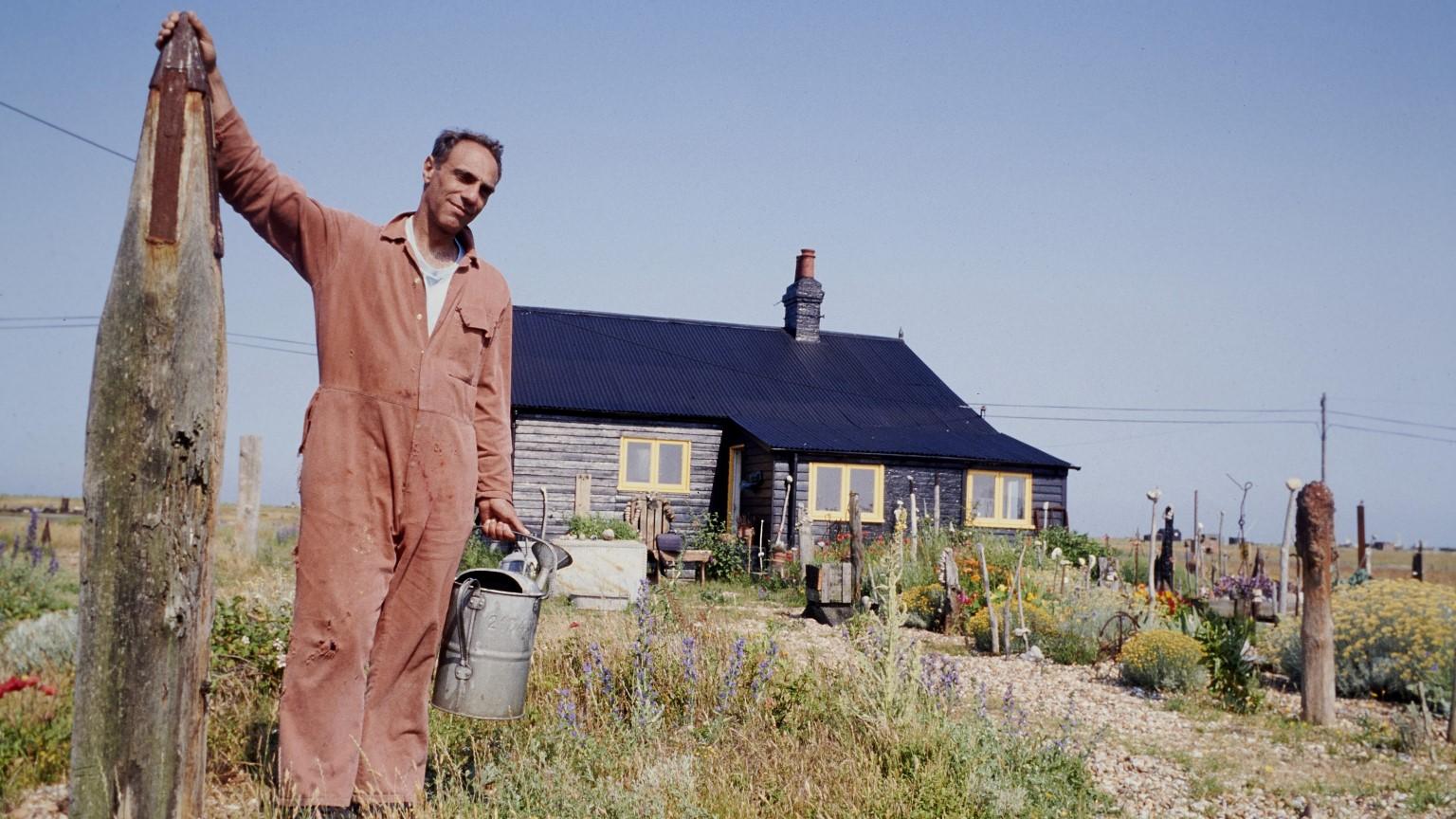
In Prospect Cottage Derek Jarman created a unique place of inspiration and wonder that, more than 25 years after his death, stands as an embodiment of the passionate life and work of the artist, filmmaker and activist.
Dungeness was once described as the fifth quarter of the globe, a place where a witch might on a stormy day be encountered flying aloft in an eggshell or careering on her broomstick over Dymchurch wall. This stony tongue of land on the Kentish coast is one of the sunniest places in the country, but it’s also the site of a nuclear power station, Dungeness B, and is assailed by violent storms. It’s a bleak and beautiful interzone, nourishing rarities of many kinds. It was in this exposed and otherworldly landscape that the artist and filmmaker Derek Jarman made his home, cajoling his much imitated garden from out of the shingle, a riot of poppies and roses blooming in the teeth of the wind.
Jarman bought Prospect Cottage in the spring of 1986, when he was 44. He’d been driving through Kent in search of bluebell woods to film and had taken a detour to Dungeness for fish and chips at the Pilot Inn. ‘There’s a beautiful fisherman’s cottage here, and if ever it was for sale I think I’d buy it,’ he told his partner, Keith Collins. A moment later, Prospect Cottage came into view, a green and white ‘For Sale’ sign outside: a happenstance so powerful that Jarman made an offer on the spot. It was small and sturdy, right on the beach, with pitch-black walls and daffodil-yellow windows and doors, like a child’s drawing of a house.
That winter, Jarman was diagnosed HIV positive, an almost certain death sentence in the years before combination therapy. As one of the first high-profile people in the country to make his status public in the press, he became an impassioned voice against the homophobia and stigmatisation endemic in Thatcher’s Britain, regularly speaking on radio and television. (‘It would be very hard to pop one’s clogs without saying anything about it,’ he once explained). During his Prospect Cottage years, he went from being a relatively obscure, if highly acclaimed, filmmaker, set designer and painter to an internationally renowned queer artist-activist, widely admired for his courage, frankness and irrepressible charm.
The idiosyncratic garden by the sea played a significant role in Jarman’s growing visibility. It was the subject of several of his books, most notably the memoir Modern Nature (1991), and served as the setting for his film The Garden (1990), as well as popping up in hundreds of newspapers and magazines around the world. Though he’d loved plants since boyhood, he hadn’t planned to grow anything at all in Dungeness. Like the house, the garden came about by chance.
One day, as he walked along the shore, he found a magnificent grey and white flint, like a dragon’s tooth. He dug it out and used it to replace a brick in an old flower bed by the front door. It looked so good that he collected more, slowly and laboriously assembling a series of formal, colour-coded stone circles in front of the house. Then he transplanted a dog rose and staked it with a driftwood staff, hanging a necklace of holey stones from the top. The garden in all its lovely quiddity had begun.
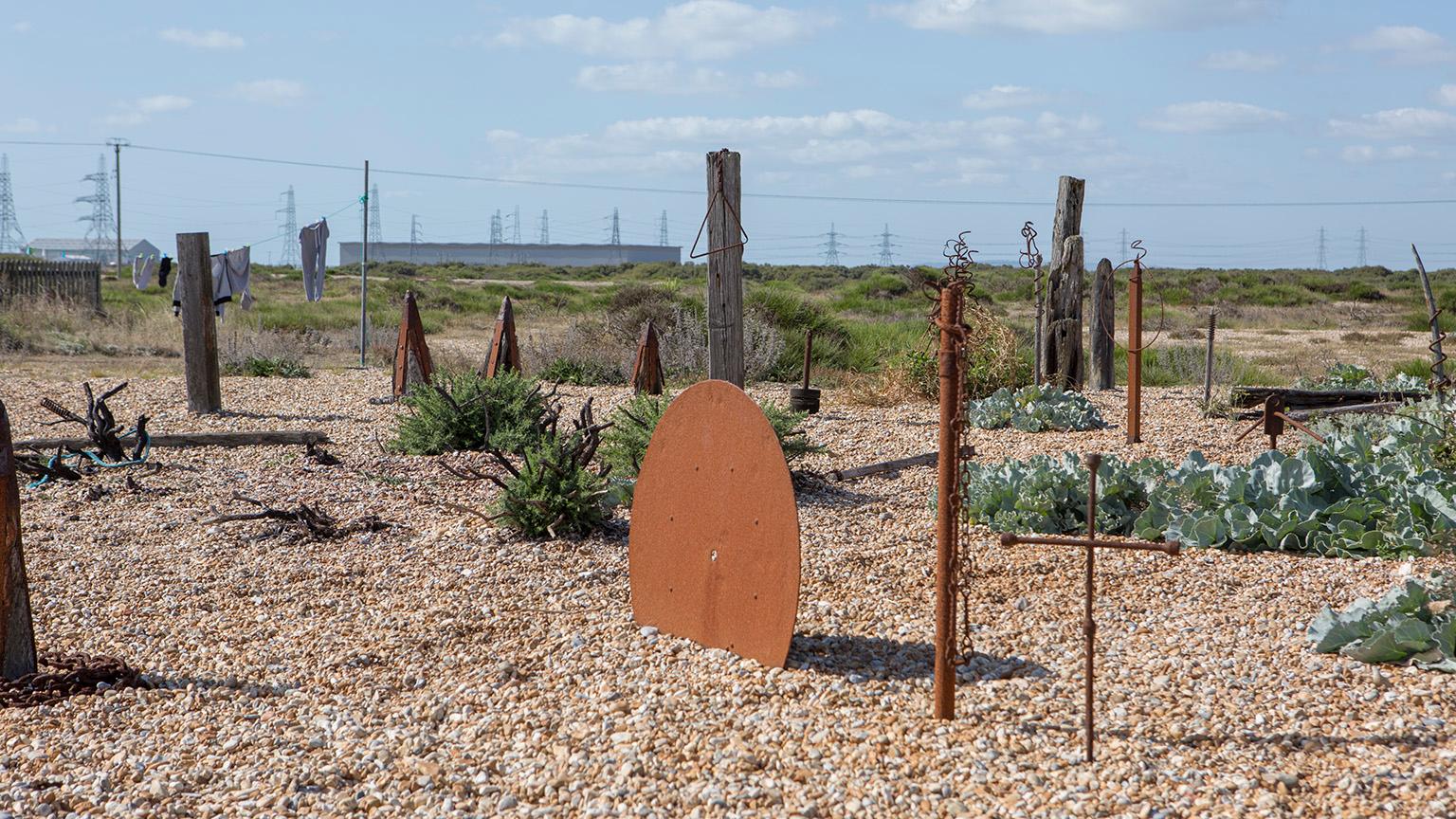
At first, he was working against the odds, nurturing delicate cuttings, battling the slugs and brown-tail moths that munched the prostrate blackthorn. He dug out years of accumulated rubbish, from tin cans to a child’s bike, shovelling manure into tiny gaps and ‘plonking’ in plants, to take their chances with the wind and broiling sun. Many of the species he favoured were drawn from old herbals, a medieval pharmacopeia a world away from the dozens of toxic pills he now had to swallow daily. Horehound, verbena, borage, lavender, valerian, spilling their scent on warm summer evenings, scrambling up rusty spirals and salvaged anchors, illuminated at night by the pulsing emerald of the power station.
Against the odds, it thrived. In time, there would be beehives and vegetable beds, a fig tree and a bank of old roses, among them Rosa mundi, which was brought to England by a crusader in the 12th century. But as the garden flourished, Jarman himself grew sicker. He lost his sight, battled with TB, pneumonia and measles, and went in and out of hospital. Unlikely as it may once have seemed, his fragile, improbable paradise has already outlived him by a quarter of a century.
I first visited the garden in 1994, a few months after Jarman’s death, but I didn’t open the door of Prospect Cottage for another 25 years. While the house itself is still instantly recognisable, at first glance the garden is more enigmatic. It merges with the beach around it. You’re never quite certain if you’re in it or not. Part of what Jarman loved about Dungeness was the absence of walls or fences, the lack of any fussy demarcation of private property.
‘My garden’s boundaries,’ he wrote in Modern Nature, ‘are the horizon.’ The landscape is wide open, and the garden is too. In midwinter much of it is submerged beneath the shingle, allowing the sculptural elements to come to the fore. Driftwood stakes and coiled chains enclose stands of silvery sea kale and santolina, the last hardy stalwarts of the year. It’s not so much a garden as an elegant skeleton, though by March it will have exploded back into vigorous life.
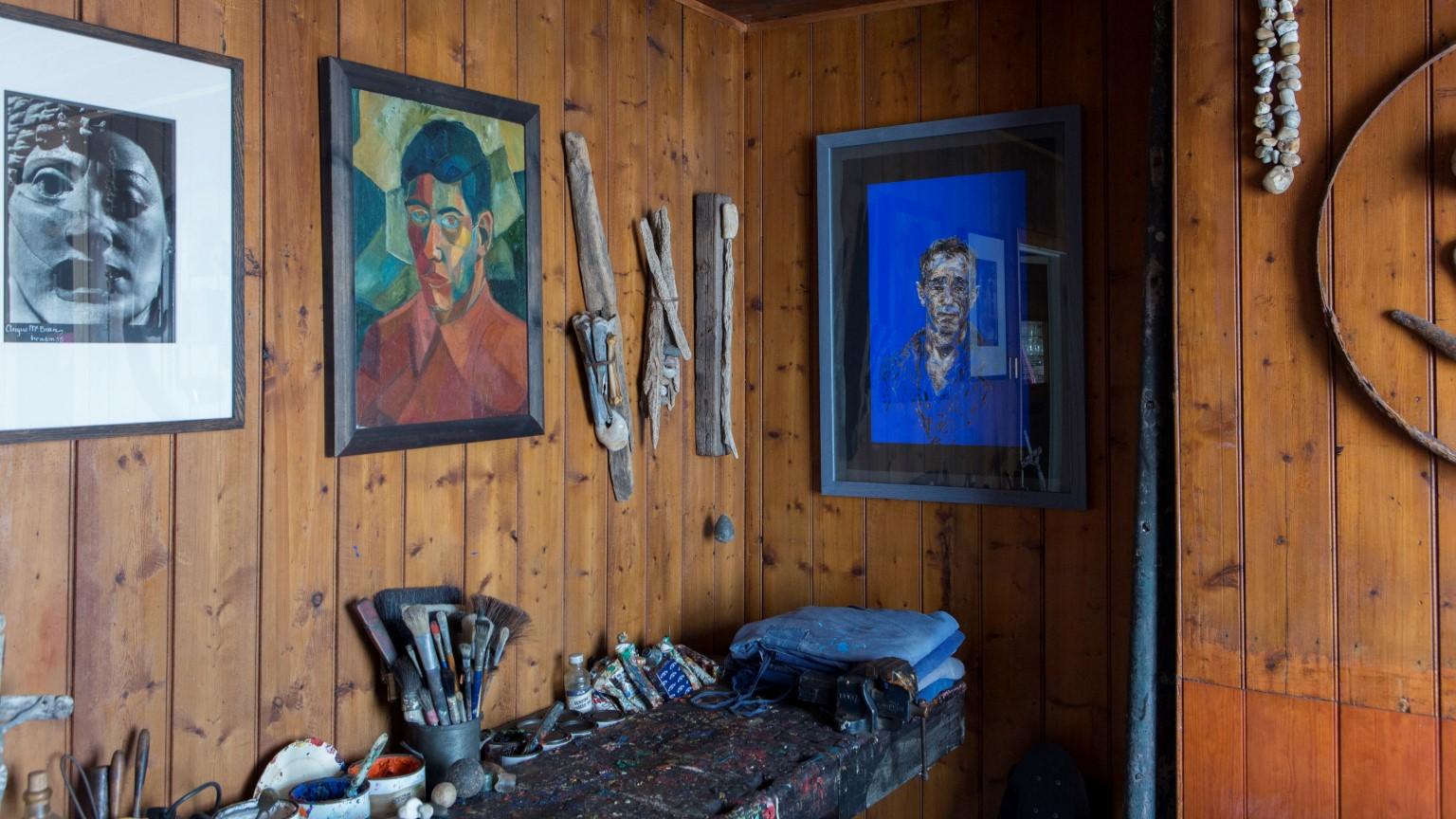
As for the house, it’s very much as Jarman left it. His colour pencils and fountain pens are on his desk, his paint-spattered overalls hang on a hook in the shipshape kitchen, his leather shoes stand, a little dusty now, by the bed. The air rings with turps, and the green rotary phone by the sofa still bears an obsolete number written in Jarman’s elegant, unmistakable italics. The bedroom is austere, nearly sombre, the dark wooden walls hung with crucifixes and icons. In the hall there are framed stills from Jarman’s many films: Sean Bean in Caravaggio, Tilda Swinton in The Last of England. In the bright back sitting room a heaped bowl of dried lemons stands like an offering beneath a huge plaster cast head of Mausolus, the ancient king whose name gave us the word mausoleum. A trug full of gardening gloves waits by the window. Whoever lived here might have just popped out.
Every room contains evidence of Jarman’s irrepressible creativity, his magpie knack for finding or making beautiful things. His own black paintings hang in the bedroom, alongside work by friends such as the filmmaker Gus Van Sant (a cottage very much like Prospect, whirling through the air like Dorothy’s house in The Wizard of Oz). Many of the decorative objects are beachcombed finds, testament to the way the local environment served as inspiration and ready source. Two salvaged brushes hang on the wall like fetishes, one badger-striped. Twenty-six broken clay pipes are carefully arranged on a black plate. A weird spiked object reveals itself as a head of red hot poker, Kniphofia, dipped in pitch. Nothing smacks of the interior designer.
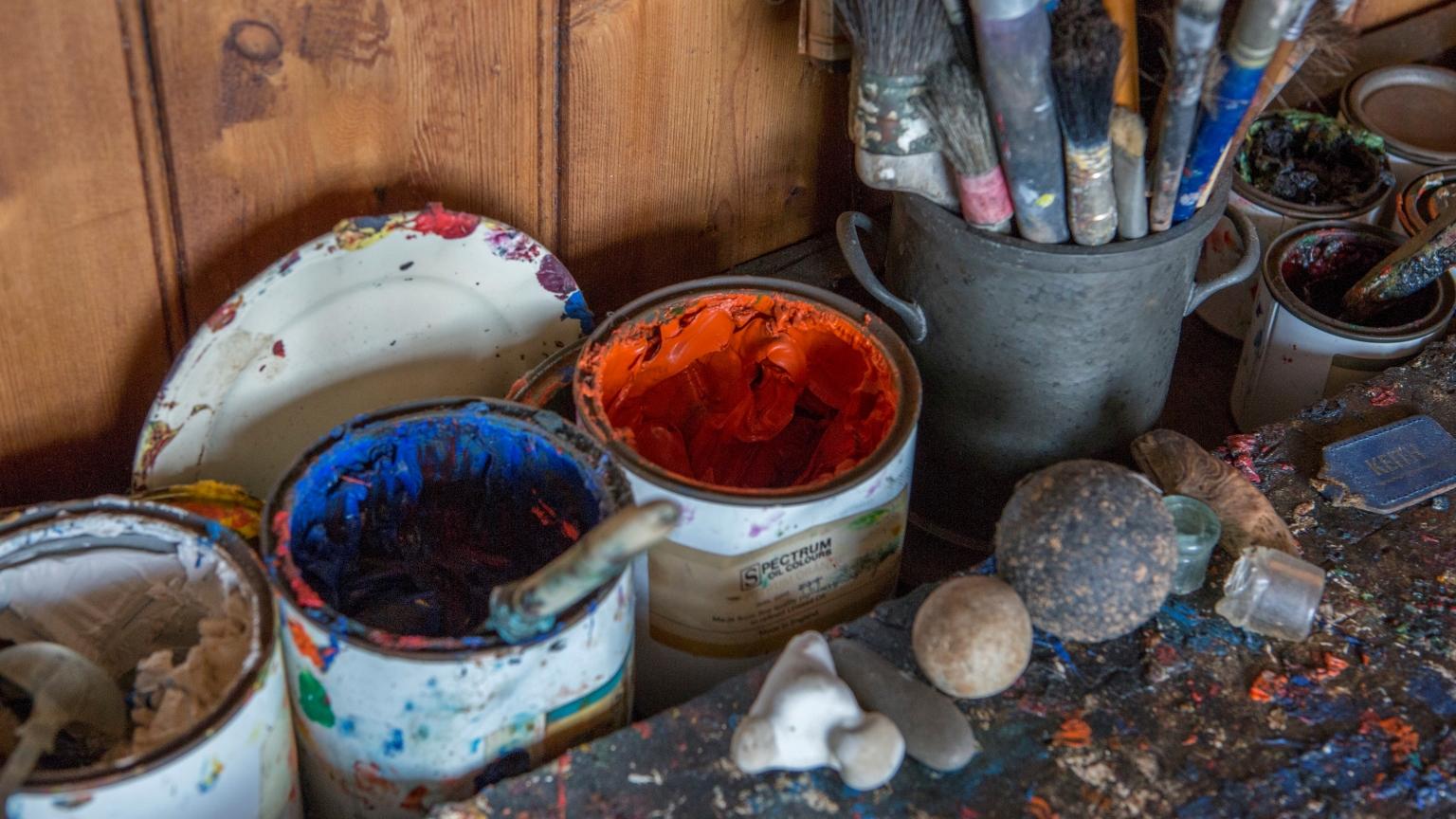
An Incredible Hulk doll sits on a stone, his hands bound in front of him. All of the doors have windows in them, etched by Jarman with flowers or poems. In the studio, paints and power tools are scattered across the worktable. You feel that at any moment he might burst in, scoop up a camera or grab a book from the toppling pile by the bed. From a researcher’s point of view, the riches are overwhelming. Photograph albums, letters and diaries are stuffed in wooden drawers or filed under the bed.
Books are everywhere, spilling out of the glass-fronted shelves and flowing down the corridors, a portrait in miniature of Jarman’s extraordinarily well-stocked mind. Subjects stray from queer politics to cinema, garden design, medieval history, religion, nuclear power, the concept of time. The herbalist Maud Grieve rubs shoulders with the Italian filmmaker Pier Paolo Pasolini, William Shakespeare and the occult philosopher John Dee. One of the most moving things in this sprawling library is the section on colour. Colour Blindness, The Colour Eye, A History of Colour, Colour and Meaning and Newton’s Opticks are shelved alongside bright jars of pigment in cadmium red, deep manganese blue and chrome yellow.
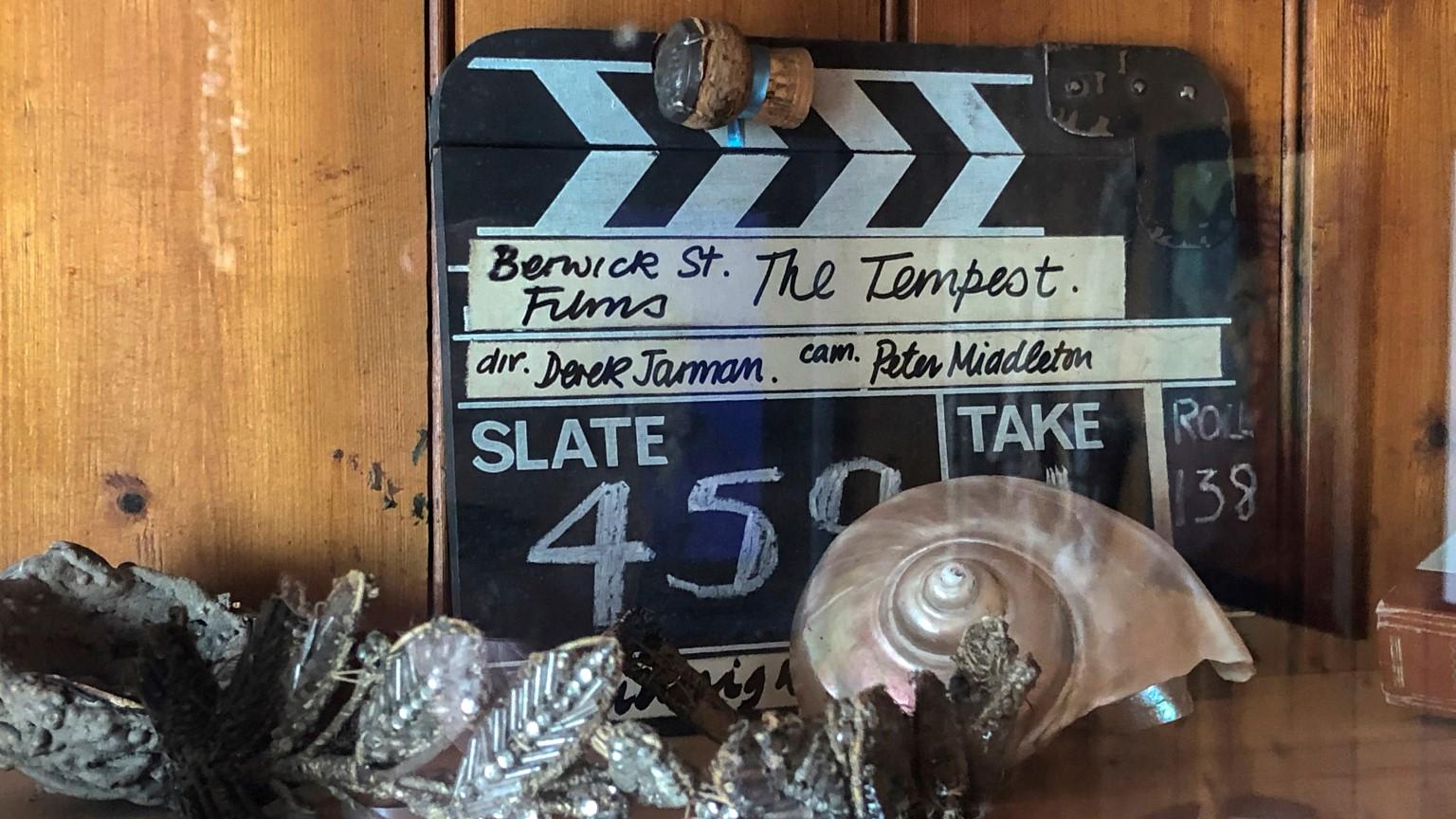
Jarman began to have problems with his sight from 1990, one of the consequences of toxoplasmosis. He became besotted with colour, writing a meditation on the spectrum, Chroma, as well as making his final film, Blue (1993), in which the screen remains for 79 minutes an unchanging ultramarine, the same colour that sometimes permeated his failing vision. Colour entered his paintings too, a compensatory flood that was sometimes laid on with a screwdriver, in ecstatic gouts. It’s painful to look at them now, but it’s also a joy. The colours are borrowed from Vincent van Gogh, or snatched from the garden itself, slabs of leaf-green, tangerine and gorse, alongside the infinite blue of the evening sea.
The marvel of it is that he made so much in what was barely any time at all. Jarman was never a wealthy artist, but he was richly resourceful, enterprising, driven, a perennial collaborator who could find what he needed from other people’s abandoned rubbish. Like the garden, his art-making was set against boundaries, flowing merrily from film to painting, spilling over into books and pop videos, bent on dissolving not just genre or form but the tired old boundary between art and life. Prospect Cottage stands as a testament to an existence of absolute creativity, the walls and fences all swept away. It’s the most inspiring place I’ve ever been to, a true English treasure that envelops and enriches everyone who visits.
Find out more about the campaign to #SaveProspectCottage: to protect Derek Jarman’s legacy, and secure the future of the cottage and garden as a centre of creative activity – for everyone.
This article was originally published in the spring 2020 issue of Art Quarterly magazine.